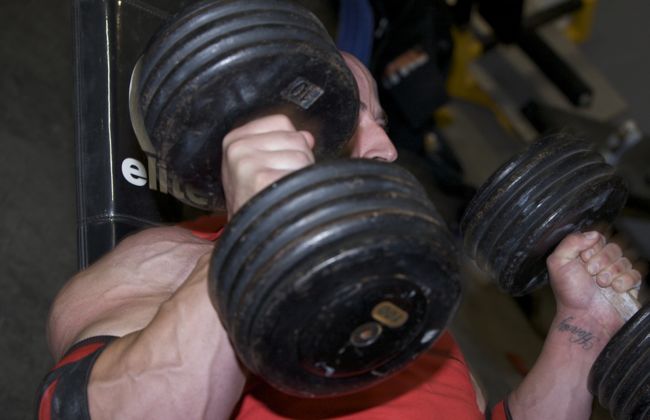
A handful of us reading this article come from an era when our grandfathers and fathers worked blue collar jobs doing manual labor. With that, blue collar came noticeably large forearms and as a result, the ability to literally choke the crap out of us if we ever got out of line.
All the good types of grunt work that involve hammering, screwing, twisting, grabbing and heavy carrying are rarely seen in training. Athletes like to save themselves and their bodies for their sport and its particular training. This is somewhat reasonable. However, the cost of doing so is the underdevelopment of their forearm musculature and subsequent grip strength, which is fundamentally important in so many sports.
The majority of the athletes we train here at McDole Performance Systems (MPS) play three of the most physical sports in North America — football, hockey, and mixed martial arts. The value of grip strength in these three sports shouldn’t have to be explained, but it’s a classic “WTF” moment to see how pathetic some of these guys are when it comes to even just wringing out a damn towel. Shameful.
After we started incorporating grip work into our athletes’ training and convincing them of the efficacy forearm training has in regards to biceps development, they were sold. When our athletes begin their grip work, usually at the end of a session, they now look at it like they're being rewarded for a good session. They don’t realize that it’s one of the more valuable parts of their training program. What many athletes and strength coaches overlook is that improving forearm strength will also help to protect and strengthen the elbow.
Many athletes focus too much attention on their biceps, but in due time, they have to scale back due to various pains (usually some form of tendinitis). Without proper attention paid to forearm training, athletes run the risk of elbow-related injuries, and they lose much of their previous training gains because they have to spend time rehabbing the tendinitis. Not only do athletes risk losing their previous progress, they also have to take into account those opportunity costs related to rehabbing (i.e., lost training time that could be allocated to other areas where the athlete might need attention).
Like the calves, the forearms are a neglected muscle group due to their stubborn nature to grow. The often heard, “It’s genetic. I don’t have big calves or forearms,” is just a crutch that novice lifters use so they don’t spend the needed time on these important muscle groups.
If you don’t look like Popeye, the key to forearm growth is variety. This allows for multiple training sessions per week if the focus changes. For example, you could perform flexion/extension work on Monday and pinching/crushing on Wednesday.
At MPS, a few of our favorite strength movements for the forearms include timed thick bar holds, farmer’s walks, plate pinches, and reverse curls with the thick EZ curl bar. A great article that goes beyond the scope of the one you’re currently reading is “Massive Forearms, Strong Grip” by Strongman John Sullivan. It’s a valuable read for anyone looking for training routines with proven efficacy.
As far as hypertrophy goes, a training circuit that includes wrists extensions, wrist flexions, and crushing grip has worked well for us. The athletes set up on our forearm bench or they kneel in front of a regular bench with their forearms flat and their wrists over the end. They start with their palms facing down holding dumbbells and they do a minute of wrist extension. Then they go right into the palms up position and do wrist curls for a minute. Once that minute is up, they go right to our seated gripper machine and do a minute there. The athletes rest for a minute between sets and then repeat the circuit three times. There isn’t any cheating. Get a stopwatch and push yourself!
Once this is over, our guys can barely mix their own shakes or drive home. However, with that said, when the off-season and training camps are complete and the guys pack up their respective gear and head onto the ice, field, or into the cage, you can bet they will have the forearms of Popeye and the grip of Nicky Santoro’s vise.









